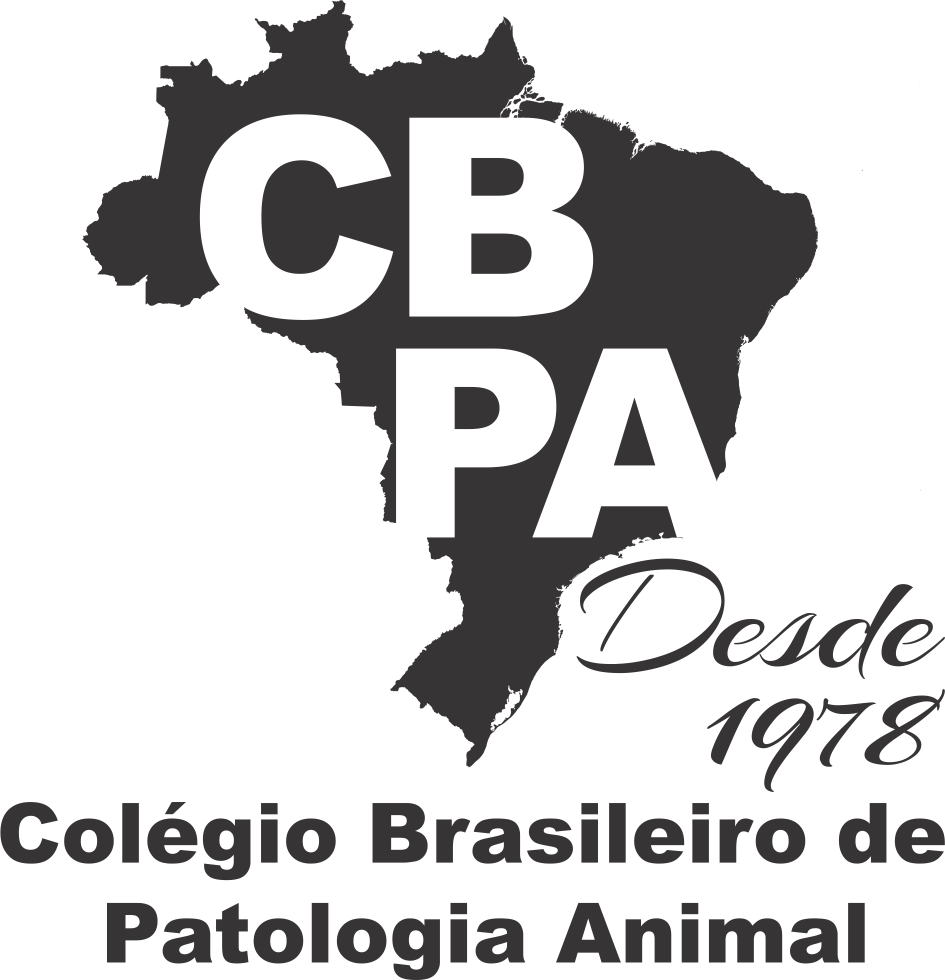Resultado da pesquisa (5)
Termo utilizado na pesquisa Caatinga
#1 - Evidence and implications of pigs as genital carriers of Leptospira spp. in the Caatinga biome
Abstract in English:
The Caatinga biome is unique to Brazil, with unfavorable environmental characteristics for the survival of Leptospira spp. However, recent studies have shown high positivity at PCR (polymerase chain reaction) in small ruminants. There are no Leptospira spp. studies based on sample calculation in pigs in the Caatinga. The aim of this study was to assess the importance of pigs in the spread of leptospirosis in the Caatinga biome. Overall, 200 biological samples (urine, blood, vaginal fluid, and tissues of reproductive and urinary tracts) were collected from 40 slaughtered sows, and MAT (microscopic agglutination test) and PCR tests were carried out to detect anti-Leptospira spp. antibodies and the agent’s DNA, respectively. The serological analysis showed a positivity rate of 5% (2/40), and the PCR identified Leptospira spp. DNA in 62.5% (25/40) of the animals. Only 2.5% (1/40) of the animals were positive for both techniques. The detected serogroups were Australis (50%) and Bataviae (50%), with antibody titers of 25 and 50. Leptospira spp. DNA was detected in 40% (16/40) of the reproductive tract samples, 32.5% (13/40) of the urinary tract, 32.5% (13/40) of the vaginal fluid and 30% (12/40) of the urine. There was no agreement (Kappa <0) between PCR samples from the genital tract vs. urinary tract or serological results. Genetic sequencing of one urine and one urinary tract tissue sample revealed 99% identity with L. borgpetersenii. The results indicate that leptospirosis is a concern in pigs in the context of Caatinga, with a high prevalence of infection detected by different diagnostic methods. The molecular analysis revealed a considerable proportion of infected animals. The findings emphasize the importance of a multifaceted approach in the diagnosis of leptospirosis in pigs, with a focus on the use of genital tract samples for the diagnosis of leptospirosis in this animal species, providing valuable insights for the control and prevention of this disease in both animals and the zoonotic context. Finally, the detection of leptospires in the genital tract indicates a possibility of male-female transmission in the venereal context.
Abstract in Portuguese:
O bioma Caatinga é único no Brasil, com características ambientais desfavoráveis à sobrevivência de Leptospira spp. Porém, estudos recentes demonstraram alta positividade na PCR (reação em cadeia da polimerase) em pequenos ruminantes. Não existem estudos para a infecção por Leptospira spp. baseados em cálculo amostral em suínos na Caatinga. O objetivo deste estudo foi avaliar a importância dos suínos na disseminação da leptospirose no bioma Caatinga. Foram coletadas 200 amostras biológicas (urina, sangue, fluido vaginal e tecidos do trato reprodutivo e urinário) de 40 porcas abatidas e realizados testes SAM (teste de soroaglutinação microscópica) e PCR para detecção de anticorpos anti-Leptospira spp. e DNA do agente, respectivamente. A análise sorológica mostrou taxa de positividade de 5% (2/40) e a PCR identificou o DNA de Leptospira spp. em 62,5% (25/40) dos animais. Apenas 2,5% (1/40) dos animais foram positivos para ambas as técnicas. Os sorogrupos detectados foram Australis (50%) e Bataviae (50%), com títulos de anticorpos de 25 e 50. O DNA de Leptospira spp. foi detectado em 40% (16/40) das amostras do trato reprodutivo, 32,5% (13/40) do trato urinário, 32,5% (13/40) do fluido vaginal e 30% (12/40) de urina. Não houve concordância (Kappa <0) entre amostras de PCR do trato genital vs. trato urinário ou resultados sorológicos. O sequenciamento genético de uma amostra de urina e de uma amostra de tecido do trato urinário revelou 99% de identidade com L. borgpetersenii. Os resultados obtidos indicam que a leptospirose representa uma preocupação em suínos no contexto da Caatinga, com alta prevalência de infecção detectada por diferentes métodos diagnósticos, bem como análises moleculares revelaram proporção considerável de animais infectados. Os resultados enfatizam a importância de uma abordagem multifacetada no diagnóstico da leptospirose em suínos, com foco no uso de amostras do trato genital para o diagnóstico da leptospirose nesta espécie animal, fornecendo informações valiosas para o controle e prevenção desta doença em animais e no contexto zoonótico. Por fim, a detecção de leptospiras no trato genital indica possibilidade de transmissão macho-fêmea no contexto venéreo.
#2 - Bovine genital leptospirosis: Findings in bulls maintained in Caatinga biome conditions
Abstract in English:
Leptospirosis is a disease that causes economic and social impact, as it affects wild and domestic animals and humans. There may be peculiarities in the epidemiology of this disease in the Caatinga biome, Brazil, where the environment is adverse and the etiologic agent, Leptospira spp., requires alternative transmission routes. Considering that in bovine leptospirosis the genital carrier is constantly neglected and the lack of reports on the role of bulls in the epidemiology of the bovine genital leptospirosis (BGL) syndrome, mainly in semiarid conditions such as Caatinga biome, this study aimed to investigate bulls maintained in Caatinga biome conditions as genital carriers of leptospires. Urinary tract (urine, bladder, and kidney) and reproductive tract (vas deferens, cauda epididymis, and vesicular gland) samples were collected from 42 slaughtered bulls. Microscopic agglutination test (MAT), polymerase chain reaction (PCR), and microbiological isolation were included as diagnostic methods. Anti-Leptospira spp. antibodies were found in 17 (40.48%) animals, while 26 animals (61.90%) had at least one organ or urine with leptospiral DNA, and 10 animals (23.81%) were positive at bacteriological culture. Sequenced samples targeting the LipL32 gene showed 99% similarity with Leptospira borgpetersenii. Molecular analysis of samples from the vas deferens and cauda epididymis is recommended for the diagnosis of genital leptospirosis in bulls and, if it is impossible to collect these tissues, semen can be used. In conclusion, this study provides important information relating to bulls from the Caatinga biome, Brazil, as carriers of genital leptospirosis. The results indicate that, even under adverse environmental conditions, leptospires may survive and propagate, mainly due to the characteristic of genital carriers for the sexually spreading of adapted Leptospira species without influence by external variables. Thus, prevention and control strategies for bovine leptospirosis need to include actions aimed at the genital carrier.
Abstract in Portuguese:
A leptospirose é uma doença que causa impacto econômico e social, pois afeta animais silvestres, domésticos e humanos. É possível que existam peculiaridades na epidemiologia desta doença no bioma Caatinga, Brasil, onde o ambiente é adverso e o agente etiológico, Leptospira spp., requer vias alternativas de transmissão. Considerando que na leptospirose bovina o portador genital é constantemente negligenciado e a falta de relatos sobre o papel dos touros na epidemiologia da síndrome da leptospirose genital bovina (BGL), principalmente em condições semiáridas como no bioma Caatinga, este estudo teve como objetivo investigar touros mantidos em condições do bioma Caatinga como portadores genitais de leptospiras. Amostras do trato urinário (urina, bexiga e rim) e do trato reprodutivo (ducto deferente, cauda do epidídimo e glândula vesicular) foram coletadas de 42 touros abatidos. Teste de soroaglutinação microscópica (SAM), reação em cadeia da polimerase (PCR) e isolamento microbiológico foram incluídos como métodos de diagnóstico. Anticorpos anti-Leptospira spp. foram encontrados em 17 (40,48%) animais, enquanto 26 animais (61,90%) apresentaram pelo menos um órgão ou urina com DNA leptospírico, e 10 animais (23,81%) foram positivos na cultura bacteriológica. As amostras sequenciadas a partir do gene LipL32 apresentaram 99% de similaridade com Leptospira borgpetersenii. Recomenda-se a análise molecular de amostras de ducto deferente e cauda do epidídimo para o diagnóstico de leptospirose genital em touros e, na impossibilidade da coleta desses tecidos, o sêmen pode ser utilizado. Em conclusão, este estudo fornece informações importantes sobre touros do bioma Caatinga, Brasil, como portadores de leptospirose genital. Os resultados indicam que, mesmo em condições ambientais adversas, as leptospiras podem sobreviver e se propagar, principalmente devido à característica de os portadores genitais disseminarem sexualmente espécies adaptadas de Leptospira sem influência de variáveis externas. Assim, as estratégias de prevenção e controle da leptospirose bovina precisam incluir ações voltadas para o portador genital.
#3 - Epidemiological aspects of natural poisoning by Prosopis juliflora in ruminants in semiarid areas of the state of Bahia, Brazil, invaded by the plant
Abstract in English:
Poisoning by Prosopis juliflora (mesquite) leads to neurological signs, cachexia and death, mainly in cattle and goats. Although the uncontrolled spread of mesquite in the Caatinga biome (biological invasion), which alters the epidemiological conditions of intoxication by this plant, has been proved for approximately 20 years, strategies for its control and prophylaxis still remain out of date. These new epidemiological conditions have allowed the uncontrolled consumption of large amounts of in natura mesquite pods by ruminants for long periods in invaded pastures, thus resulting in increased history of poisoning. This study aimed to describe the new epidemiological aspects of P. juliflora poisoning in cattle and goats, 78 years after the introduction of this plant in the country, with emphasis on its degree of invasion, and to update the control and prophylaxis measures of this intoxication and the mapping of areas of outbreak occurrence in the semiarid region of the state of Bahia, Brazil. Seven outbreaks of natural mesquite poisoning, two in goats (OB 1 and OB 2) and five in cattle (OB 3, OB 4, OB 5, OB 6, and OB 7), were studied in loco in the municipalities of Juazeiro, Iaçu, Tucano, Santa Teresinha, Barra do Mendes, Barra and Tabocas do Brejo Velho. In the studied outbreaks, clinical-epidemiological (OB 1 to OB 7) and histopathological (OB 1, OB 2, OB 3, and OB 5) findings were compatible with mesquite poisoning, and this was the first anatomopathological proof of poisoning by this plant in this state. In addition, in the state of Bahia, disease occurs in an area approximately three times larger than previously known. On the farms investigated, mesquite introduction occurred between 1980 and 2005, through the single planting of an average of 33 seedlings. Since then, propagation of this plant has occurred progressively, with gradual invasion of native pastures, which enabled the evaluation of plant spread (biological invasion) on these farms 15 (OB 2), 25 (OB 7), 30 (OB 5 and OB 6), 35 (OB 3) and 40 (OB 1 and OB 4) years after its introduction. Historical information on the introduction and spread of mesquite in the state of Bahia had never been analyzed. In 2020, a degree of mesquite invasion an average 59.57% was verified in the pastures of the seven farms where the outbreaks occurred. The great biological invasion capacity of this plant drew attention, especially in OB 5. The high degree of mesquite invasion observed (new epidemiological conditions) justifies the increased number of cases of poisoning observed in this study. Processing of P. juliflora pods (grinding) was not carried out on any farm (OB 1 to OB 7), and ruminants uncontrollably consumed large amounts of pods in natura for long periods in invaded pastures, which allowed massive dispersal of seeds through feces over decades. The main factors responsible for the gradual invasion of pastures by mesquite over time were absence of crop management plans (silvicultural treatments) and lack of knowledge by producers on disease etiology. Given the new epidemiological conditions, restriction of animal access to in natura pods in pastures and supply of mesquite bran are crucial for the control and prophylaxis of this poisoning, as consumption of in natura pods had a strong correlation with the high degree of invasion in the pastures where the seven outbreaks occurred. Additionally, although the commercialization of pods and exploitation of wood of mesquite trees can provide livestock farmers with extra income – being the correct management for areas invaded by this plant, such practice is either not yet known or not carried out technically or satisfactorily by farmers. In addition to being a threat to the Caatinga’s biodiversity, the increasing invasion of semiarid areas by mesquite 78 years after its introduction in the Northeast region of Brazil, is a risk for herds, since the occurrence of poisoning outbreaks may become more frequent. Therefore, it is highly advisable that effective measures be adopted to control P. juliflora propagation.
Abstract in Portuguese:
A intoxicação por Prosopis juliflora (algaroba) cursa com sinais neurológicos, caquexia e morte, principalmente em bovinos e caprinos. Embora a disseminação descontrolada da algaroba na Caatinga (invasão biológica) tenha sido comprovada há cerca de 20 anos, o que altera as condições epidemiológicas dessa intoxicação, as estratégias de controle e profilaxia permanecem desatualizadas. Essas novas condições epidemiológicas permitem o consumo descontrolado de grande quantidade de vagens in natura de algaroba, por longos períodos, nas pastagens invadidas, o que tem resultado em aumento dos históricos de intoxicação. Objetivou-se com esse estudo descrever os novos aspectos epidemiológicos da intoxicação por P. juliflora em bovinos e caprinos, 78 anos após a introdução da planta no país, com ênfase no grau de invasão da planta, bem como atualizar as medidas de controle e profilaxia dessa intoxicação e das áreas de ocorrência dos surtos no semiárido baiano. Foram estudados in loco sete surtos (S1 a S7) de intoxicação natural por algaroba, sendo dois em caprinos (S1 e S2) e cinco em bovinos (S3, S4, S5, S6 e S7) no semiárido baiano (Juazeiro, Iaçu, Tucano, Santa Teresinha, Barra do Mendes, Barra e Tabocas do Brejo Velho). Nos surtos estudados, os achados clínico-epidemiológicos (S1 a S7) e histopatológicos (S1, S2, S3 e S5) foram compatíveis com intoxicação por algaroba, sendo essa intoxicação comprovada, pela primeira vez, com exames anatomopatológicos na Bahia. Ademais, na Bahia a doença ocorre em uma área cerca de três vezes maior do que a, até então, conhecida. Nas fazendas estudadas a introdução da algaroba ocorreu entre 1980 e 2005, através do plantio único de, em média, 33 mudas. Desde então, a disseminação da planta ocorreu de forma progressiva, invadindo gradativamente as pastagens nativas, o que permitiu avaliar a disseminação da planta (invasão biológica) nessas fazendas cerca de 15 (S2), 25 (S7), 30 (S5 e S6), 35 (S3) e 40 (S1 e S4) anos, após sua introdução. Informações históricas acerca da introdução da algaroba e sua disseminação na Bahia nunca haviam sido estudadas. Em 2020, verificou-se que nas pastagens das sete fazendas onde os surtos ocorreram, o grau de invasão por algaroba alcançou, em média, 59,57%. Chamou a atenção a grande capacidade de invasão biológica da planta, sobretudo, no S5. O alto grau de invasão da algaroba observado (novas condições epidemiológicas) justificou o aumento dos casos de intoxicação verificados nesse estudo. O beneficiamento das vagens (moagem) não era realizado em nenhuma fazenda (S1 a S7) e os ruminantes consumiam de forma descontrolada (livre) grande quantidade de vagens in natura, por longos períodos, nas pastagens invadidas, o que possibilitou a dispersão massiva das sementes da planta pelas fezes ao longo das décadas. O que aliado à inexistência de um plano de manejo do cultivo (tratamentos silviculturais) e ao desconhecimento da etiologia da doença pelos produtores foram os principais fatores responsáveis pela invasão gradativa da planta nas pastagens, ao longo dos anos, o que justifica o aumento dos casos de intoxicação observados na Bahia. Frente às novas condições epidemiológicas, a restrição do acesso dos animais as vagens in natura nas pastagens e o fornecimento do farelo de algaroba são cruciais para o controle e profilaxia dessa intoxicação, pois o consumo das vagens in natura teve forte correlação com o alto grau de invasão das pastagens onde os sete surtos ocorreram. Adicionalmente, embora a comercialização das vagens e a exploração da madeira da algaroba possam proporcionar renda extra aos pecuaristas e serem boas formas de manejo de áreas invadidas por algaroba, tais práticas ainda não são conhecidas ou não são realizadas de forma técnica ou a contento. A crescente invasão da algaroba no semiárido, 78 anos após a sua introdução no Nordeste, além de ser uma ameaça à biodiversidade da Caatinga é um risco para os rebanhos, visto que, a ocorrência de surtos de intoxicação podem se tornar mais frequentes. Desta maneira alerta-se para adoção de medidas efetivas de controle da propagação descontrolada da algaroba.
#4 - Anthelmintic resistance in goat herds in the Caatinga and Mata Atlântica biomes, 35(7):643-648
Abstract in English:
ABSTRACT.- Borges S.L., Oliveira A.A., Mendonça L.R., Lambert S.M., Viana J.M., Nishi S.M., Julião F.S. & Almeida M.A.O. 2015. [Anthelmintic resistance in goat herds in the Caatinga and Mata Atlântica biomes.] Resistência anti-helmíntica em rebanhos caprinos nos biomas Caatinga e Mata Atlântica. Pesquisa Veterinária Brasileira 35(7):643-648. Escola de Medicina Veterinária e Zootecnia, Universidade Federal da Bahia, Av. Ademar de Barros 500, Salvador, BA 40170-110, Brazil. E-mail: simlobor@yahoo.com.br
The use of anthelmintic drugs for long periods as the main measure control of gastrointestinal nematodes (GINs) has led to the inefficacy of levamisole, benzimidazoles and macrocyclic lactones. This study describes the in vivo anthelmintic activity against natural trichostrongyle nematodes populations in goats. We selected 18 herds from the Caatinga (n=12) and Mata Atlântica (n=6) biomes, Bahia State, Brazil, raised in communal pastures in semiarid region. Groups of 8 to 10 goats were treated with albendazole (ABZ), ivermectin (IVM), levamisole (LEV), moxidectin (MOX), and closantel (CLOS). The results of the Fecal Egg Count Reduction Test indicated simultaneous resistance of Haemonchus sp. and Trichostrongylus spp. genera against albendazole (ABZ), ivermectin (IVM), levamisole (LEV), moxidectin (MOX), and closantel (CLOS). The efficacy percentages ranged from 0 to 92%, 0 to 75%, 0 to 91%, 69 to 97%, and 0 to 85% for ABZ, IVM, LEV, MXD and CLOS respectively in the Caatinga bioma, and 0 to 59% for ABZ and 9 to 59% for IVM in the Mata Atlântica biome. Most herds showed efficacy lower than 95% for anthelmintics, with the exception of one herd in which the efficacy for MOX was 97%. The results indicated the presence of GINs resistant to main anthelmintics classes in goat herds in these biomes.
Abstract in Portuguese:
RESUMO.- Borges S.L., Oliveira A.A., Mendonça L.R., Lambert S.M., Viana J.M., Nishi S.M., Julião F.S. & Almeida M.A.O. 2015. [Anthelmintic resistance in goat herds in the Caatinga and Mata Atlântica biomes.] Resistência anti-helmíntica em rebanhos caprinos nos biomas Caatinga e Mata Atlântica. Pesquisa Veterinária Brasileira 35(7):643-648. Escola de Medicina Veterinária e Zootecnia, Universidade Federal da Bahia, Av. Ademar de Barros 500, Salvador, BA 40170-110, Brazil. E-mail: simlobor@yahoo.com.br
A utilização de anti-helmínticos por longos períodos como principal medida de controle das parasitoses gastrintestinais de ruminantes levou a ineficácia aos levamisol, benzimidazóis e avermectinas. Este estudo descreve a atividade anti-helmíntica in vivo em populações naturais de nematoides trichostrongilídeos de caprinos. Foram selecionados 18 rebanhos provenientes dos biomas Caatinga (n=12) e Mata Atlântica (n=6), do Estado da Bahia, Brasil, criados em pastagens comunais em região semiárida. Grupos de oito a 10 animais foram tratados com albendazol (ABZ), ivermectina (IVM), levamisol (LEV), moxidectina (MOX) e closantel (CLOS). Os resultados do Teste de Redução da Contagem de Ovos nas Fezes indicaram resistência simultânea dos gêneros Haemonchus sp. e Trichostrongylus spp. para o ABZ, IVM, LEV, MOX e CLOS. As percentagens de eficácia variaram de 0-92%, 0-75%, 0-91%, 69-97% e 0-85% para o ABZ, IVM, LEV, MXD e CLOS, respectivamente, no bioma Caatinga e 0-59% para o ABZ e 9-59% para o IVM no bioma Mata Atlântica. Verificou-se nos rebanhos eficácia inferior a 95% para estes anti-helmínticos, com exceção de um único rebanho no qual a eficácia para MOX foi de 97%, o que sugere a presença de NGIs resistentes aos principais classes de anti-helmínticos em rebanhos caprinos destes biomas.
#5 - Leishmanicidal and cholinesterase inhibiting acti-vities of phenolic compounds of Dimorphandra gardneriana and Platymiscium floribun-dum, native plants from Caatinga biome
Abstract in English:
In recent years, the Brazilian Health Ministry and the World Health Organization have supported research into new technologies that may contribute to the surveillance, new treatments, and control of visceral leishmaniasis within the country. In light of this, the aim of this study was to isolate compounds from plants of the Caatinga biome, and to investigate their toxicity against promastigote and amastigote forms of Leishmania infantum chagasi, the main responsible parasite for South American visceral leishmaniasis, and evaluate their ability to inhibit acetylcholinesterase enzyme (AChE). A screen assay using luciferase-expressing promastigote form and an in situ ELISA assay were used to measure the viability of promastigote and amastigote forms, respectively, after exposure to these substances. The MTT colorimetric assay was performed to determine the toxicity of these compounds in murine monocytic RAW 264.7 cell line. All compounds were tested in vitro for their anti-cholinesterase properties. A coumarin, scoparone, was isolated from Platymiscium floribundum stems, and the flavonoids rutin and quercetin were isolated from Dimorphandra gardneriana beans. These compounds were purified using silica gel column chromatography, eluted with organic solvents in mixtures of increasing polarity, and identified by spectral analysis. In the leishmanicidal assays, the compounds showed dose-dependent efficacy against the extracellular promastigote forms, with an EC50 for scoporone of 21.4µg/mL, quercetin and rutin 26 and 30.3µg/mL, respectively. The flavonoids presented comparable results to the positive control drug, amphotericin B, against the amastigote forms with EC50 for quercetin and rutin of 10.6 and 43.3µg/mL, respectively. All compounds inhibited AChE with inhibition zones varying from 0.8 to 0.6, indicating a possible mechanism of action for leishmacicidal activity.
Abstract in Portuguese:
Nos últimos anos, o Ministério da Saúde do Brasil e a Organização Mundial da Saúde tem apoiado a investigação de novas tecnologias que possam contribuir para a vigilância, novos tratamentos e controle da leishmaniose visceral no país. Assim, o objetivo deste trabalho foi isolar compostos de plantas do bioma Caatinga, e investigar a toxicidade destes compostos contra as formas promastigotas e amastigotas de Leishmania infantum chagasi, principal parasita responsável pela leishmaniose visceral na América do Sul, e avaliar a sua capacidade para inibir a enzima acetil-colinesterase (AChE). Após a exposição aos compostos em estudo, foram realizados testes utilizando a forma promastigota que expressa luciferase e ELISA in situ para medir a viabilidade das formas promastigotas e amastigota, respectivamente. O ensaio colorimétrico MTT foi realizado para determinar a toxicidade destas substâncias utilizando células monocíticas murina RAW 264.7. Todos os compostos foram testados in vitro para as sua propriedade anti-colinesterásica. Um cumarina, escoparona, foi isolada a partir de hastes de Platymiscium floribundum, e os flavonóides, rutina e quercetina, foram isolados a partir de grãos de Dimorphandra gardneriana. Estes compostos foram purificados, utilizando cromatografia em coluna gel eluída com solventes orgânicos em misturas de polaridade crescente, e identificados por análise espectral. Nos ensaios leishmanicidas, os compostos fenólicos mostraram eficácia contra as formas extracelulares promastigotas, com EC50 para escoporona de 21.4µg/mL e para quercetina e rutina 26 e 30.3µg/mL, respectivamente. Os flavonóides apresentaram resultados comparáveis à droga controle, a anfotericina B, contra as formas amastigotas com EC50 para quercetina e rutina de 10.6 e 43.3µg/mL, respectivamente. Os compostos inibiram a enzima AChE com halos de inibição variando de 0,8 a 0,6cm, indicando um possível mecanismo de ação para a atividade leishmanicida.








